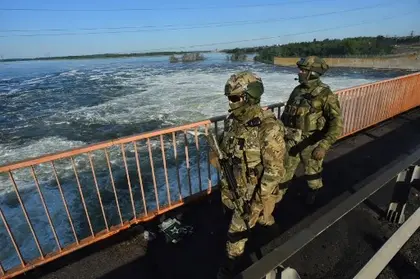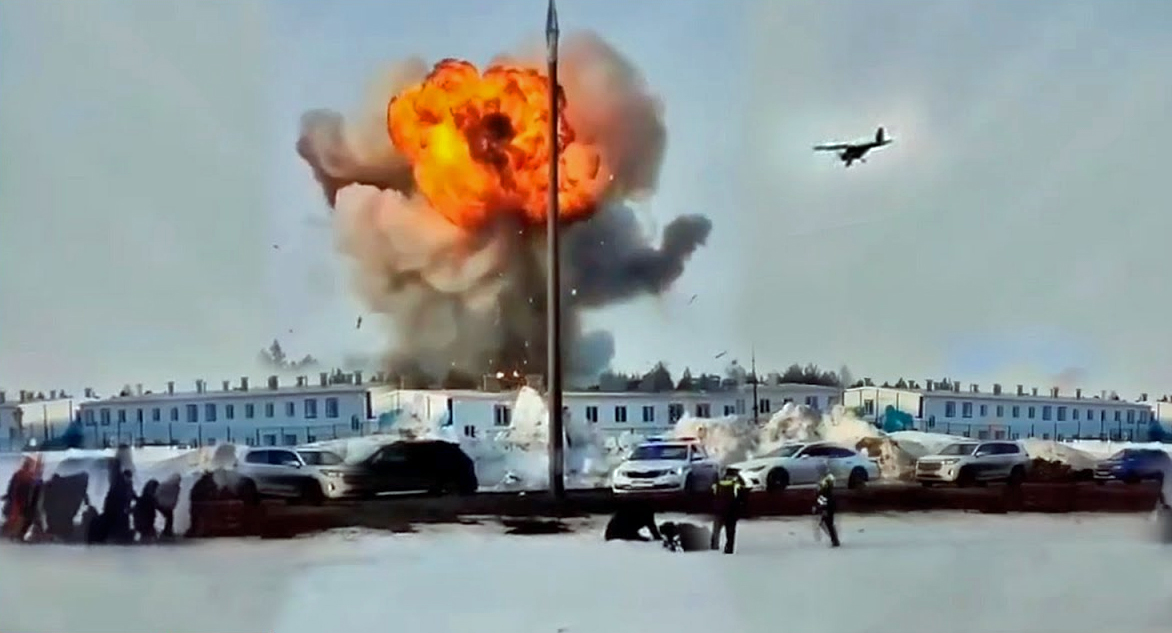Kremlin proxy officials said Friday, Oct. 21, they were building up defences and turning Ukraine’s southern city of Kherson into a “fortress” as Kyiv’s forces advance and Russia pulls residents from the region.
The claim came as Ukraine’s President Volodymyr Zelensky said Russian troops were preparing to destroy a hydroelectric dam in the southern Kherson region in what would amount to a “catastrophe on a grand scale”.
JOIN US ON TELEGRAM
Follow our coverage of the war on the @Kyivpost_official.
Ukrainian forces in recent weeks — aided by Western weapons — have been advancing along the west bank of the Dnieper river towards the region’s main city, also called Kherson.
Kherson was the first major city to fall to Moscow’s troops since the February invasion began and retaking it would be a crucial prize in Ukraine’s counter-offensive.
Moscow-installed authorities in Kherson said Friday Kyiv forces killed four people when they shelled the Antonivskiy bridge over the Dnipro river that civilians have been urged to cross in advance of an anticipated Ukraine assault.
“Four people were killed,” pro-Moscow official Kirill Stremousov said on Telegram. “The city of Kherson, like a fortress, is preparing for its defence.”
A Ukrainian military spokeswoman Nataliya Gumenyuk denied Kyiv’s forces were responsible, saying its forces do not target local populations.
Russian state-run media in recent days had aired footage showing civilians with bags taking ferries across the river from Kherson.

ISW Russian Offensive Campaign Assessment, December 24, 2024
Risks of disasters
Kyiv has branded the organised movement of Kherson residents to Russia and other Moscow-controlled regions as “deportations” of Ukrainian citizens.
Zelensky said late Thursday that Russian forces had mined the Kakhovka hydroelectric power plant with the intent of blowing it up.
Hundreds of thousands of people around the lower Dnipro River would be in danger of flash flooding if the dam was destroyed, Zelensky warned in a speech Thursday to European leaders.
He said cutting water supplies to the south could also impact the cooling systems of the Zaporizhzhia nuclear power plant, Europe’s largest.
The nuclear facility is a key concern of Russia’s eight-month invasion with both sides regularly accusing the other of shelling near it and endangering operations.
Ukraine’s push in the south comes after a sweeping counter-offensivein the northeast Kharkiv region that has badly impaired Russia’s supply routes and logistics corridors in the eastern Donbas region.
But Russian forces have continued shelling the region’s largest city, Kharkiv, and the presidency said Friday that “industrial infrastructure” was hit in the city, wounding six.
The attack in the latest in weeks-long barrage that has targeted infrastructure and particularly energy facilities.
Energy-saving measures were put in place across the country after Russian missile and drone strikes destroyed what Zelensky said was more than 30 percent of the country’s power stations in a week.
Resilient Ukraine
A 64-year-old Ukrainian, Vyacheslav, told AFP in Kyiv that the nation would make do, despite the restrictions.
“There are books to read. There battery-powered lights. I think we can hold out for a few hours. There are gas stoves so it will still be possible to cook,” he said, but declined to give his last name.
Kyrylo, a 27-year-old shop salesman, said that there had been a rush on power banks after Russian attacks began on the energy facilities in the capital.
“We don’t sell flashlights but regarding power banks, I can say that on the 10th, when the attack on Kyiv began, almost all available power banks were sold, and in general, the demand for power banks increased by 70 or 80 percent.
The Ukraine presidency said Friday that Russian forces were continuing to shell sections along the entire frontline of Donbas in east Ukraine and that two people were killed in the Donetsk region.
You can also highlight the text and press Ctrl + Enter






